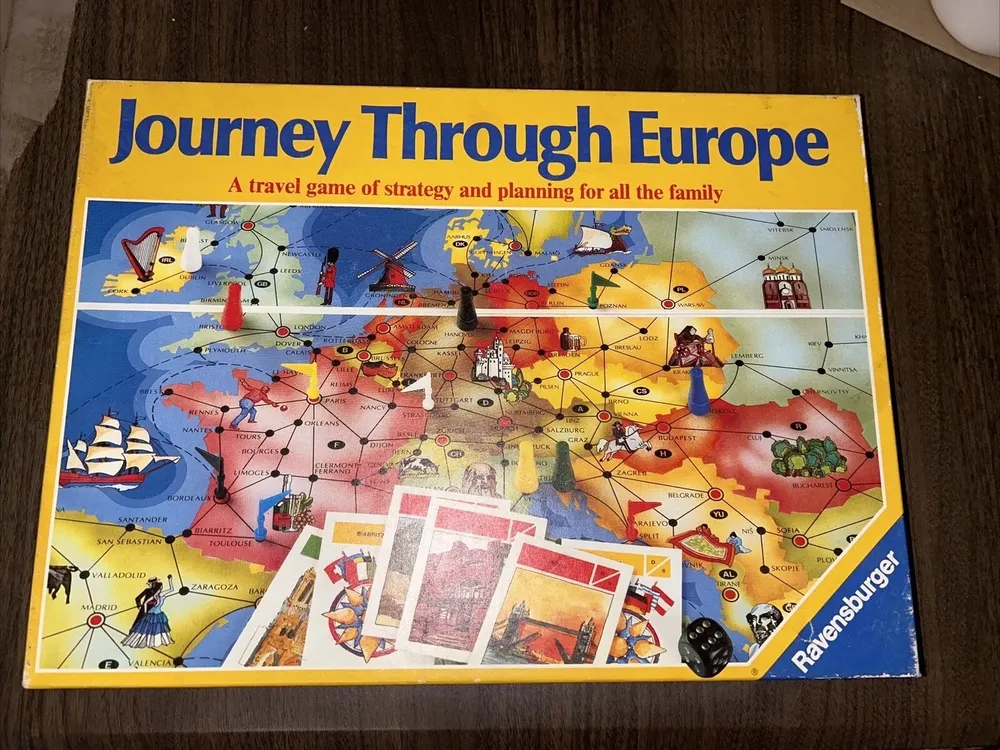A Journey Through Europe (1759)
Journey Through Europe
Journey Through Europe is a family board game that has been popular since its first publication in 1884 by Otto Maier Verlag, now known as Ravensburger. The game has gone through several editions and is available in multiple languages. In the game, players travel around a map of Europe, rolling a die to move, and visit a number of cities on the map. The objective is to visit all the objective cities and return home to win.
Significance
The game is popular and significant for several reasons:1.
Educational
: The game encourages players to learn about European geography and cities.2.
Family-friendly
: It is a simple and enjoyable game for the whole family, with no complex rules or strategies.3.
Historical
: The game has a long history, starting with its first publication in 1884, and has evolved over time to cater to different audiences.
Game Components of A Journey Through Europe
How To Setup A Journey Through Europe
To set up the game, players place their tokens at the starting point on the board, typically London. Each player is given a set of rules and instructions. The game board, with its numbered spaces, outlines the journey through principal cities of Europe.
Gameplay Mechanics and Game Objective
Player Experience
Playing *A Journey Through Europe* is an educational and somewhat antiquated experience. The game’s use of a teetotum instead of dice reflects the historical context, as dice were considered gambling instruments and not suitable for Christian households. The game’s track-based mechanics make it straightforward but also somewhat predictable.
Pros
Cons
Personal Thoughts on A Journey Through Europe
*A Journey Through Europe* is a game that is more of a historical curiosity than a modern entertainment staple. It is ideal for those interested in the history of board games, geographical education, or who appreciate the nostalgic value of playing a game from the 18th century. While it may not offer the complexity or excitement of modern board games, it provides a unique and educational experience that connects players with the past.
We are supported by our audience. When you purchase through links on our site, we may earn an affiliate commission, at no extra cost for you. Learn more.

